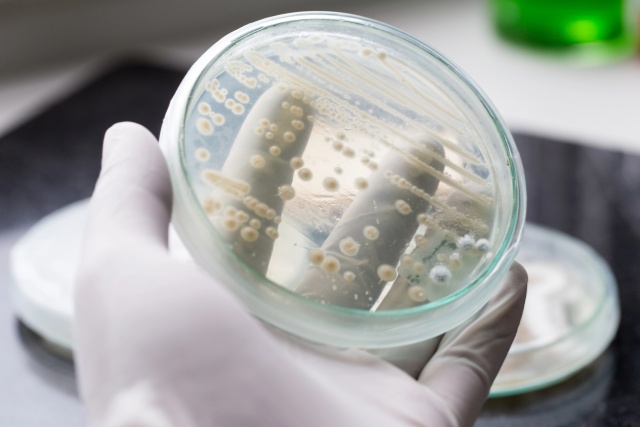May 7, 2019
By Yinqiang
1. Customized "Food and Nutrition" for microorganisms--Microbial Nutrition
Microorganism is a large group of tiny&living organisms which include bacteria, fungus, virus, protist and microalgae that can only be watched by microscope. They are tiny but keep close relationship with human's life, and cover many fields such as health, food, pharm, agriculture, environment, energy, chemistry, etc.
Human use special way to select microorganism strains (suitable for industrial fermentation) and promote microorganisms perform high efficient or balanced growth by running proper nutritional condition, fermentation equipments and process to accumulate biomass, then produce biomass products(e.g. lactobacillus, bifidobacterium for yogurt) and valued bio-chemicals(e.g. food or feed grade amino acid, vitamin, enzyme, etc.). During this process, microorganisms need proper nutrition to support their own growth or product synthesis. This so called nutrition” needs " Microbial Culture Medium" to supply.
Microbial culture medium is a kind of man-made solid or liquid complex nutrients which can support the growth and metabolism of microorganisms. Generally, it includes carbohydrates(carbon source), nitrogen substances(nitrogen source), mineral salts(include trace elements), growth factors(include vitamins, nucleic acid, nucleotide, etc.) and water, which are essential for microorganisms. In order to meet the demand from different microorganisms, researchers and fermentation engineers keep exploring the demand of microorganisms nutrition and mix various raw materials with different ratio to make different culture medium. In one word, microbial culture medium is customized "food and nutrition" for different microorganisms.
In those "food and nutrition", carbon source, nitrogen source and growth factor are important. Carbon source could be compared to "staple foods" rich in carbohydrates for human, such as "rice, noodle or bread"; Nitrogen source could be compared to "main dishes" rich in protein and peptide for human, such as "egg, meat or soybean"; Growth factor could be compared to "complementary foods" rich in amino acids, vitamins, nucleotides, etc., such as "fruit, vegetable or milk". Rational combination of those nutrients could guarantee the growth and product synthesis of microorganisms.
In those nutrients, nitrogen source is very important. Generally, microorganisms include 14% nitrogen and those 14% nitrogen is involved in protein, peptides, amino acids, nucleic acids, nucleotides, enzymes, etc. in microorganisms, those substances which include nitrogen play an important role in the growth and metabolism of microorganisms. So, good nitrogen source must be rich in readily used nitrogen and easily soluble nitrogenous organic compounds, we call it “Organic Nitrogen Source”
2. “Evolutionary history” of Organic Nitrogen Source
Organic Nitrogen Source is not only a kind of key ingredient in fermentation culture media, but also a kind of CCP(Critical Control Point) in modern concepts of industrial fermentation. In 1879, Naegeli found out that microorganisms could grow well in culture media which contain partly hydrolyzed proteins. That means organic nitrogen source was well known as a kind of key composition for microbial culture. In 1880, Naegeli published this study. In 1882, he named this partly hydrolyzed protein with "peptone". Today, 130 years later from the time when peptone was found out, with the rapid development of biotechnology and fermentation industry, organic nitrogen source has been widely used in microbial fermentation and its importance has been understood by more and more practitioner in fermentation industry.
Initially, organic nitrogen source was mainly derived from animal tissue and plant extract, such as potato medium and malt extract medium, but the materials are not suitable for large scale fermentation, only can be used in stage of culture preservation and shake-flask culture for its instability and the existence of some risks (related to safety). Then, under some special process, some by-products from agriculture and animal products were made into some kinds of organic nitrogen sources which were widely used in fermentation industry because of cost-effective and stable supply. In 1945, Knigt SG started to use corn steep liquor as organic nitrogen source for Penicillin fermentation. In 1950s, soya bean meal was started to be used in Spiramycin fermentation as organic nitrogen source. Subsequently, various types of organic nitrogen sources were developed for fermentation, such as animal origin materials(peptone, hydrolysate, animal origin extract, etc.); vegetable origin materials(soya peptone, wheat hydrolysate, peanut meal, cotton seed meal, etc.); microbial origin materials(inactive yeast, yeast extract, autolyzed yeast, yeast peptone, etc.).
Up to now, the importance of organic nitrogen source, which made remarkable contribution to industrial fermentation, is well known by the whole fermentation industry. But, from overall of organic nitrogen source industry, most of materials are under “free development” without any strict standard. With the development of modern biotechnology, more and more people pay increasing attention to environmental safety and protection. “Free development” does not meet the demand of modern fermentation industry.
At present, there are 3 main problems about the development of organic nitrogen source:
a. Safety problem: vegetable origin materials have some risks and arguments of GMO and allergen, some of them are produced by acid hydrolyzation process may contain Tri-chloropropanol which is a kind of Cancerogenic Substance. Animal origin materials may have some pathogenic factors such as BSE/TSE, high level of heavy metal and the problem of custom taboo. Those problems are still not resolved well today. Compared with above-mentioned materials, organic nitrogen source from baker’s yeast has enough guarantees about safety.
b. Stability problem: organic nitrogen contain complex nutrients and compositions such as amino acids, peptides, vitamins, nucleotides, trace elements, etc. which are difficult to quantify. Different kinds of organic nitrogen sources, different suppliers, and even different lots from the same supplier perform significant difference. The different nutrients in organic nitrogen source would affect fermentation process from different aspects. So, the stability of organic nitrogen source and quantified nutrients are important for high level fermentation yield and productivity.
3. Standardization problem: from general industry of organic nitrogen to each sub-industry such as peptone, corn steep liquor, etc., no uniform standard was made. This situation is unusual in modern industry.
Generally speaking, the developing situation of organic nitrogen source industry could be summarized as liberalization, half-professionalization and non-standardization. How to meet the increasing needs of stable quality and consistency from fermentation industry? How to solve the problems of safety and stability in organic nitrogen source industry? Maybe the only way is standardization, quantification and customization of organic nitrogen source.
Standardization means make uniform standard of production and quality, solve the safety problems through regulation of industry. Quantification means quantify various compositions in organic nitrogen and achieve stable control. Customization means design tailor made materials special for different microorganisms and different fermentation products.
The composition of organic nitrogen source is so complex that it is difficult and expensive to quantify each component through common testing method. Thus, it is difficult to quantify each component in actual process of fermentation. In recent years, high throughput instrument, such as Amino acid analyzer, GC(Gas Chromatography), HPLC(High Performance Liquid Chromatography), Atomic Absorption Spectrometer, etc., are used for test of various organic nitrogen source and it is possible to achieve accurate quantification of the composition in organic nitrogen source. In addition, IR(Infrared spectroscopic analysis) is gradually used in culture media industry and the difference among various composition of organic nitrogen source could be detected with short time by analyzing near infrared absorption spectrum of different organic groups. Those above methods are effective to guarantee the stability of organic nitrogen source.
With the fast development of modern molecular biology, cell biology technique, metabolic engineering and regulation technique, genetic background and metabolic pathway are well known by researchers and technicians. So, it is inexorable trend to develop customized organic nitrogen source according to different microorganisms and different fermentation based products.
c. Safe, High performance and “Broad spectrum” organic nitrogen source---Baker’s yeast extract
Currently, organic nitrogen source, such asyeast extract derived from baker’s yeast has achievedindustrialized and standardized production, so, this kind of material could meet the needs of large-scale supply and standardized production from fermentation industry completely. Furthermore, safety of raw materials is completely guaranteed by using baker’s yeast extract and it is correspondence with the trend of standardization and quantification. So, it has been a widely used product.
Baker's yeast extract comes from primary grown baker’s yeast and is treated with special process of Autolysis, Enzymolysis, Separation, Evaporation and Concentration, or Spray drying, then obtain 3 physical forms of yeast extracts---powder, paste and liquid, which belong to100% natural and refined ingredients without any risks of GMO, allergen, illness and taboo and are not from by-products of industry or agriculture lacking of quality and stability control.
Baker’s yeast extract isnot only rich in nitrogen substances such as protein, peptides and amino acids, but also rich in vitamins, nucleic acids, nucleotides, nucleosides, etc. which is considered as growth factors for microorganisms. Besides, Baker’s yeast extract also include some essential elements for microorganisms, such as phosphorus, sulfur, potassium, sodium, calcium, magnesium, and trace elements. So, it can supply complete and rich nutrition for broad range of microorganisms.
So, Baker’s yeast extract is a kind of “broad spectrum” organic nitrogen source with good safety and performance for microorganisms and microbial fermentation.
4. Why microorganisms “prefer” Baker's yeast extract
Baker's yeast extract is a kind of good performance complex nutrients source:
a. From microorganism---Without risk of illness such as BSE/TSEcaused by animal origin materials and risk of GMO and Allergen caused by some vegetable origin materials, Baker’s yeast extract (a kind of saccharomyces cerevisiae) is clean and safe for microbial fermentation and fermentation-based products.
b. Good solubility can promote high efficient assimilation by microorganisms, the metabolic system of which is relative weak and difficult to assimilate insoluble substances in culture medium. Therefore, yeast extract with good solubility could be assimilated efficiently by microorganisms.
c. Rich in micro-molecule substances, such as short peptides, amino acids, vitamins, nucleotides and essential elements. Microorganisms need lots of above-mentioned micro-molecule substances which is easily assimilated for support high efficient growth and product synthesis. But microorganisms assimilated macro-molecule substances through decomposed by special enzymes which are synthesized by microorganisms themselves.
d. Light color is good for downstream process after fermentation and also good for the fermentation-based products which need relative light color.
e. Contain complete and rich nutrients and meet the “appetite” of microorganisms to avoid that some organic nitrogen source with single or imbalanced nutrients could not meet the demand of microorganisms.
f. Large scale, standardized and clean production, no affected by place and season, so consistency with different lots and good for stable assimilated by microorganisms and stable fermentation production.
5. How microorganisms serve human relying on Baker’s yeast extract
Microorganism is small, but its contribution is very important. Take microbial fermentation industry as an example:
Generally,Laboratory of University, Institute, Technology center or R&D center of corporation select suitable microorganisms for industrial fermentation first, then transfer it to fermentation factory to optimize and scale up. After getting fermentation-based product and refinery, some of them could be used for food, beverage or pharm industry, some of them could be used for agriculture, environment or feed industry and some of them could be used for chemistry, energy or spinning industry.
For example,some fermentation company could produce high quality lactic acid bacteria as a kind of probiotic by strict control of fermentation process for nutrition or dairy(cheese, yogurt, etc.); some fermentation use specialbacillus to produce amino acid for nutrition, food or feed; Some fermentation company useactinomyceteto produce antibiotic in very large scale production for pharm or feed. Some fermentation company use recombinant microorganisms to produce high-value-added products such as vaccine, insulin or hormone for human illness or the growth of animal. There are lots of such examples.
Baker’s yeast extract is widely used as key microbial nutrition to support above-mentioned fermentation. So, we could say, good microbial nutrition could promote benign development of microbial fermentation industry and the development of fermentation industry would improve the standard of microbial nutrition industry so that the microbial nutrient sources with good performance, such as Baker’s yeast extract, would get more demand and space from fermentation industry.
6. FAQ
a. Microbial culture medium is customized "food and nutrition". Generally, what about dosage of Baker's yeast extract in culture medium?
If culture medium is 1kg or 1L, the dosage of Baker's yeast extract is usually from 2g to 30g, it depends on specific microorganisms, culture medium formula and fermentation process.
b. There are so many other organic nitrogen sources, such as peptone, soya bean meal, and corn steep liquor, etc. Could yeast extract be replaced by those materials?
It depends on the specific situation of users. But generally, Baker's yeast extract is unique Kosher and Halal certified organic nitrogen source which is a kind of refined raw material and not from animal / vegetable / by-product from industry and agriculture.
So, Baker's yeast extract with advantage ofhigh efficiency, safety, clean and consistencyis well known and highly appreciated by fermentation industry. It also meets the developing trend of standardization and clean in fermentation industry. Those advantages are not involved in other types of organic nitrogen source. Therefore, the trend should be that Baker’s yeast extract would replace other types of organic nitrogen sources step by step, but not be replaced by other organic nitrogen sources.
c. Could effective composition in Baker’s yeast extract be quantified?
Yes. Effective composition such as protein, amino acids, vitamins, essential elements, nucleotides, etc. could be detected accurately.
d. Baker‘s yeast extract contain complete nutrients. Is it possible to only use one ingredient, Baker's yeast extract, as culture medium?
Just like this article mentioned above, most of microorganisms are weak and the ability of assimilating nutrients is not good enough, so the materials with rich micro-molecule substances and complete nutrients, such as Baker's yeast extract, are very important for microbial fermentation.
However, only relying on one ingredient, Baker’s yeast extract, is not enough. The composition in culture medium is diversified so that it can meet the complicated nutrition demand from microorganisms. In addition, this kind of nutrition demand has not been very clear today, just because of complexity of fermentation. As a conclusion, the diversification of culture medium composition is necessary.
Although, Baker's yeast extract contain complete nutrients, it is just a kind of organic nitrogen source which contains more complete nutrients than other organic nitrogen sources. So, besides organic nitrogen source, carbon source also need to be added to culture medium in a proper ratio with organic nitrogen source.
Sometimes, Baker’s yeast extract need to be combined with other types of organic nitrogen source which is rich in relative big molecule substances (slow released nutrients), so that it can meet the demand of small and big molecule substances in different stage of fermentation from some special microorganisms with long fermentation time
e. The effective composition in Baker’s yeast extract include protein, amino acid, vitamin, essential element, nucleic acid, etc. Why not add those substances separately, but use Baker's yeast extract?
There are 3 main reasons:
- Baker’s yeast extract is refined after baker’s yeast fermentation and belong to 100% natural ingredients. It could meet the standard of clean and safe fermentation production. Butif add above-mentioned substances separately, it is difficult to guarantee those chemical materials are all clean and safe.
- Baker’s yeast extract is only one kind of ingredient and good for stability of production, adding lots of materials may take more risks of production control and not easy to trace. In addition, it is difficult to operate to add dozens of even hundreds of materials into fermentation process.
- At present, the ratio of main nutrients in Baker’s yeast extract could be adjusted by special control and special process, no need to add every single nutrient specially, it is not economic and not good for stability of production.
f. Since Baker's yeast extract has many advantages, why some fermentation company still use Brewer's yeast extract as a raw materials?
Generally, Brewer’s yeast extract belong to by-product which comes from spent yeast mud after brewer's production. So, the cost is cheap. Some fermentation companies use it just because they are very sensitive in production cost or they think its quality could meet their needs.
But, actually, inherent defects of Brewer’s yeast extract limit its application in fermentation industry, such as instability caused by such by-product lacking of stability control, fluctuation during different seasons, difficult to get Halal certificate due to relative higher level of alcohol content, dark color, may contain Allergen, limited scale of production line and supply, etc.
So, Brewer’s yeast extract is not universality for various types of microbial fermentation so that it bears so limited application together with lots of safety risks.
Nowadays, to solve the safety problems of Brewer’s yeast extract, Angel Yeast has developed cost-effective Baker's yeast extract for the market and give more choices for fermentation industry.
 | Published by Yin Qiang Senior manager of Angel Yeast APAC Division |
About Angel Microbial Nutrition





